Raford
Houses within 10km of this house
Displaying 42 houses.
Houses within 10km of Raford
Displaying 42 houses.
| House name | Description | |
|---|---|---|
| Moyode | The seat of the Persse estate for many years. At the time of Griffith's Valuation it was the seat of Burton Persse. In 1894 Slater refers to it as the seat of De Brugh Persse. In 1906 it was owned by Lord Ardilaun and was valued at almost £73.Only some ruins of Moyode Castle remain although elements of the stable yard still exist. |

|
| Hollypark | In 1814 Hollypark was the seat of Pierce Blake and at the time of Griffith's Valuation the property of Peter Blake when it was valued at £20. In 1894, Slater referred to it as the seat of Col. M.P. Blake. In 1906 Maria C. White held the mansion house at Hollypark. It is still extant and occupied. |
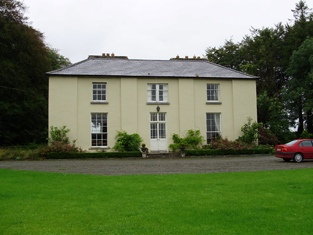
|
| Bookeen Glebe | Burton Persse was leasing this house to Rev. Robert Graham at the time of Griffith's Valuation. In the nineteenth century, the house was used as the residence of the incumbent at Bookeen Church. It was later purchased by the Aitken family who had served as Land Agents for the Clancarty estate at Coorheen, outside Loughrea. The house has been renovated and is extant and occupied. |

|
| Dunsandle | A large house built in the later 18th century for Denis Daly, M.P. Wilson refers to it in 1786 as "the most magnificent and beautiful seat, with ample demesnes". It was held in fee by Lord Dunsandle at the time of Griffith's Valuation, when it was valued at £70. In 1894 Slater refers to it as the seat of William Daly. Dunsandle House was sold in 1954 and demolished in 1958 although portions of the walls are still standing. Evidence of both the stable yard and walled garden still exists also. |
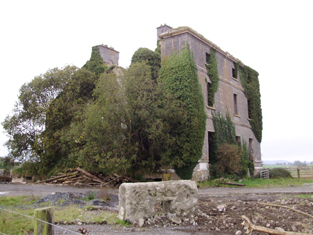
|
| St. Cleran's or Issercleran | Issercleran or St.Clerans was the home of the Burke family who built the house c.1784. At the time of Griffith's Valuation it was owned by John Hardiman Burke and was valued at £45. In 1906 it was the property of Anne Maxwell (nee Burke) and was valued at £46. It was sold in the 1950s and became the home of film director, John Huston. Up until 2008 it functioned as a luxury hotel owned by the Griffin Group. |

|
| Gammahoe Cottage | A smaller property on the Persse estate, possibly a steward's house, with 257 acres in 1855. There is no trace of a house at this location now although there is some evidence of farm buildings and garden walls. | |
| Derryhoyle | In 1855 the house at Derryhoylemore, parish of Lickerrig, barony of Dunkellin, was leased by Robert O'Hara to Samuel Wade. In 1906 the house at Derryhoyle was valued at £12 and was owned by Robert F. O'Hara who also owned over 100 acres of untenanted land there. A house is still extant at the site. |

|
| Benmore | In 1778 this was a Daly property and in 1786, Wilson also refers to it as the seat of Mr. Daly. In 1824 Mr. O'Connor was listed as a non-resident proprietor in county Galway. The OS Name Books record the proprietor of Benmore as Hugh O'Connor with a Mr. Dowdall acting as his agent in the 1830s. In 1855 Valentine O'Connor Blake was leasing 584 acres and buildings valued at £8 in the townland of Benmore, parish of Grange, barony of Loughrea, to Denis Deely. The original house does not appear to be extant. | |
| Lynchfort House | Martin J. Lynch was occupying this house at the time of Griffith's Valuation when it was valued at £10. Lynchfort House is still extant and in good condition though it is not clear if it is continuously occupied. |

|
| Ballynahivnia | Lord Dunsandle is recorded as the lessor of 161 acres and a complex of buildings, including a mill, valued at £18, in the townland of Ballynahivnia, in 1855. The substantial remains of a tower house, together with the foundations of the mill building remain at the site, close to Riverville Bridge. |

|
| Ballybroder | In 1814 Ballybroder was the seat of Henry Burke. Ballybroder was recorded as the property of Mr. Burke in the 1830s. In 1855 Patrick Burke was leasing the house at Ballybroder from Peter Dolphin. In 1906 Eleanor M. Burke is recorded as the owner when the house was valued at £10. The house at Ballybroder is still extant and in reasonable repair but unoccupied. |

|
| Danesfort (Loughrea) | On the first edition Ordnance Survey map this house is labelled Lisduff House but on the 25-inch edition of the 1890s it has become known as Danesfort. In the mid 19th century it belonged to a branch of the Dolphin family of Turoe. By the early 20th century Danesfort was inherited through marriage by the Tighes of The Heath, near Ballinrobe, county Mayo and in 1906 was the property of Robert Dolphin Tighe when it was valued at almost £16. It is no longer extant. |
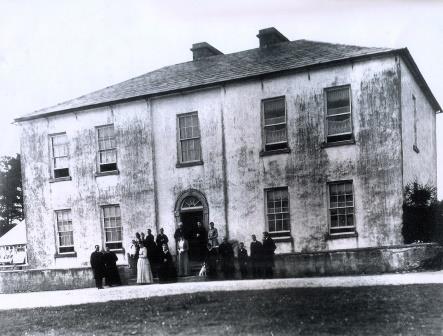
|
| Woodlawn | Wilson mentions Woodlawn as "a very superb ediface", the seat of Frederick Trench, in 1786. In 1837 Lewis recorded Woodlawn as the seat of J. Trench and mentions the extraordinary mausoleum nearby. At the time of Griffith's Valuation, the house and buildings at Woodlawn were valued at £125, one of the highest buildings valuations in county Galway at that time. In 1894 Slater refers to Woodlawn House as the seat of John Samuel Barrett. By 1906 it had a value of £150 and was in the possession of Lord Ashtown. Woodlawn House is still extant but unoccupied. |

|
| Tooloobaun House | At the time of Griffith's Valuation, Henry Hudson was leasing this house, then valued at almost £4, from John R. Hudson/Hodson. It is not shown on the later 25-inch Ordnance Survey map of the 1890s. | |
| Rathville | At the time of Griffith's Valuation, John Blake was the holder of a property at Carrowreagh, barony of Athenry, valued at £10. Rathville House is still extant and occupied. In 2013 it was offered for sale. |

|
| Turoe | Wilson refers to "Tourow" as the seat of Mr. Dolpin in 1786. Oliver Dolphin owned Turoe at the time of Griffith's Valuation when it was valued at £20. Slater refers to it as the seat of Miss Dolphin in 1894. In 1906 the mansion at Turoe was the property of Hubert Dolphin and was valued at £16. The original house is no longer extant but evidence of the stable yard and walled garden can be seen at the site, close to Turoe Pet Farm. |
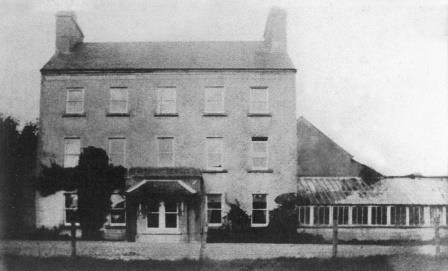
|
| Tallyho Lodge | Tallyho Lodge was the home of Burton Persse, Sen, in the 19th century. The house is no longer extant but traces of the walled garden remain. |

|
| Rathglass | In 1814 Rathglass House was the residence of Bernard Rochford. In November 1850 Mark Lynch was occupying the house. At the time of Griffith's Valuation it was occupied by James M. Bourchier. It is still extant. |
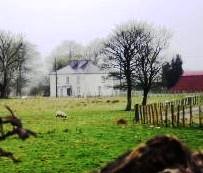
|
| Killimer Castle | Originally a tower house, Killimor Castle was modernised in the early 1700s by the addition of two slated wings. The Dalys continued to reside there until the end of the 18th century when the castle and demesne were leased to Dominick Burke of Slatefield. In 1837 Lewis records it as the seat of Hyacinth Burke. Dominick J. Burke was still leasing the house at Killimor from Rev. Nicholas Devereux at the time of Griffith's Valuation. It was then valued at £16. The house at Killimordaly had fallen into disrepair but has been restored. |

|
| Bingarra | Occupied by James Clarke in the mid 1850s, leasing from the Bodkin estate and advertised for sale in Nov 1855. Modern buildings exist at the site now. | |
| Beech Hill | Beech Hill was built in the mid to late 18th century. In 1786 Wilson mentions it as the seat of Mr. Mahon. In 1814 Beech Hill was the residence of Bernard Mahon. It was offered for sale by the Mahons in 1851 and it was owned at the time of Griffith's Valuation by Edward C. Villiers and was valued at £26. In 1906 Beech Hill House was still valued at £26. It is now in ruins. |
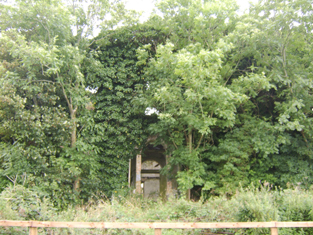
|
| Temple | This property is labelled Temple House on the 25-inch Ordnance Survey map having been built after the publicaiton of the 1st edition maps. In the 1850s William Poole was leasing the property from the Graves estate when the buildings were valued at £10. Substantial ruins still exist at the site. |

|
| Attymon House | At the time of Griffith's Valuation this house was occupied by Mary Broderick, who later married Lord Dunsandle. It was then valued at £8. In 2008 the current house at this site was offered for sale. The sale details state that it was originally built as a hunting lodge but later extended. See Irish Times 22 May 2008. |

|
| Tiaquin | At the time of the Burke sale in 1851 the house was described as an 'old fashioned cottage style' type of building. A gable end of the house still stands with the nearby farm buildings still in use. |

|
| Greenhills | Samuel Barrett was leasing a house valued at £24 from John Blakeney in 1856. In 1837 Lewis had recorded Greenhills as the seat of S. Barrett. In 1885 Walford noted that it was the residence of Mrs. Barrett, widow of John Samuel Barrett. In 1906 Greenhills was part of the estate of Lord Ashtown (Trench). The house is still extant but derelict. |

|
| Ashbrook | In June 1854 William Kelly was recorded as the owner of the property at Ashbrook, formerly Bouilagh, parish of Killaan, barony of Kilconnell. At the time of Griffith's Valuation the house at Ashbrook, valued at £20, was the residence of Charles B. Lynch. It is no longer extant. | |
| Clooncah | In 1778, Clooncah was a property of the Daly family. and Wilson mentions it as the seat of Peter Daly in 1786. Lewis records it as the seat of P. Daly in 1837. William Galway held this property at the time of Griffith's Valuation, when it was valued at £30. According to local tradition, Clooncah House was demolished in the early twentieth century and the stone used in the construction of the new National School at Attymon. | |
| Caraunbeg | Obadiah Holland was leasing a house valued at £8 and over 240 acres at Caraunbeg, parish of Killimordaly, barony of Kilconnell, from Lord Ashtown at the time of Griffith's Valuation. It is no longer extant. | |
| Caraunmore/Anneville | Rev. Joseph Seymour was leasing a house valued at £9 together with over 350 acres at Caraunmore, parish of Killimordaly, from the Ashtown estate at the time of Griffith's Valuation. This is possibly the house which Lewis records as Anneville, the seat of Rev. J. Seymore, in 1837. It is now a ruin. | |
| Streamsford | The house at Streamsford, parish of Killimordaly, was leased from James O'Hara to Patrick Cogovan.and valued at £10 at the time of Griffith's Valuation. It is still extant and occupied. |
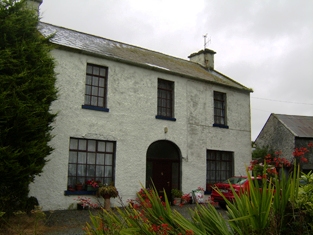
|
| Carnakelly | Carnakelly was the original house from whch the Dalys of Dunsandle descended. John Monaghan was leasing this house, valued at £4 together with over 100 acres, from Lord Dunsandle's estate, at the time of Griffith's Valuation. |

|
| Graig Abbey | At the time of Griffith's Valuation, James Clarke was leasing the house at Graig Abbey from the Warburton estate when it was valued at £18. It is still extant and in use. |
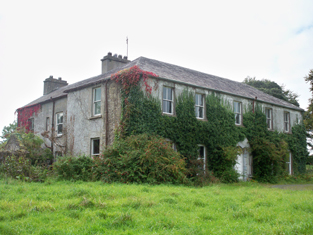
|
| Kiltullagh House | In 1786 Wilson mentions "Kiltolla" as the seat of Patrick D'Arcy. Lewis records Kiltullagh House as the seat of J. D'Arcy in 1837. At the time of Griffith's Valuation, Pierce Joyce held a herd's house here valued at almost £4. It is described as "in ruins" on the 25-inch Ordnance Survey map of the 1890s and these ruins are still extant. |

|
| Carrowroe House | In 1786, Wilson refers to "Carrorowe, at present uninhabited". At the time of Griffith's Valuation, John Dennis was leasing a property at Carrowroe North, barony of Athenry, valued at £15, from Lord Dunsandle's estate. Buildings remain at the site. |

|
| Boyhill House | Richard Persse was leasing a house valued at £5 from Burton Persse at Boyhill, barony of Athenry at the time of Griffith's Valuation. In 1906 it was still the property of Burton Persse who also held almost 300 acres of untenanted land in the locality. Some ruins and farm buildings still remain at the site. | |
| Gloves (Athenry) | The Ordnance Survey Name Books record Gloves as the residence of Mr. Browne in the 1830s. At the time of Griffith's Valuation Mark Loughnane held the townland of Gloves Middle, barony of Athenry including buildings valued at almost £8. By 1906 Michael J. Monaghan was the owner of this property. Buildings are still extant at the site. | |
| Gortakeeran | John A. Daly owned buildings valued at almost £8 at Gortakeeran in 1906. At the time of Griffith's Valuation this townland was owned by John B. Daly including a herd's house valued at 15s. | |
| Abberanville | Abberanville House is descibed as "in ruins" on the 1st edition OS map. The townland, containing 24 acres, was part of John B. Daly's estate and was leased to John Blake when the buildings were valued at £15s. The ruins of a hemp factory were located nearby. There are no buildings at the site now. | |
| Esker | In 1786 Wilson refers to Esker as the seat of Mr. Daly, "situated on a lofty hill". By the time of Griffith's Valuation this property was being leased to the Dominican Order by Lord Dunsandle, when it was valued at £20. The Dominicans departed in the 1860s and it became for some time a seminary for the RC diocese of Clonfert. It was taken over by the Redemptorist Order in 1901, in whose possession it still remains. It now serves as a retreat centre. |
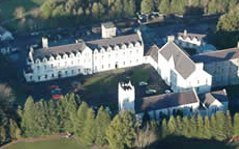
|
| Newgrove House | In 1786 Wilson refers to Newgrove as the seat of Mr. Blake. At the time of Griffith's Valuation, the property is described as a care-takers house, and leased to John H. Blake by the Wallscourt estate. It is labelled Newgrove House on the 1st edition Ordnance Survey map but is described as "in ruins" on the later 25-inch map of the 1890s. | |
| Cottage (Loughrea) | In 1786 Wilson refers to Cottage as the seat of Mr. Varo [?]. At the time of Griffith's Valuation, the property was leased by Bryan Rynn from the Clanricarde estate and valued at £4. The original house is no longer extant. | |
| Fortlands House (Loughrea) | In 1786 Wilson refers to a charter-school at Loughrea and this premises is labelled on the 1st edition Ordnance Survey map. However, by the time of Griffith's Valuation, it appears to have reverted to use as a house, leased by John Smyth from the Clanricarde estate and valued at £11. The house at this location is labelled Fortlands House on the 25-inch Ordnance survey map of the 1890s. A house is still extant at the site. |

